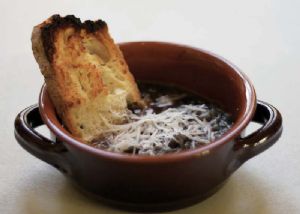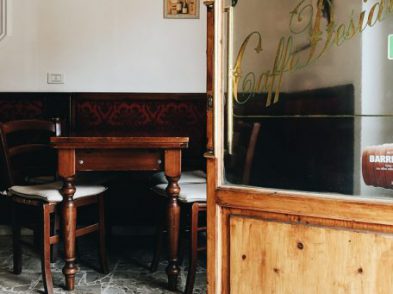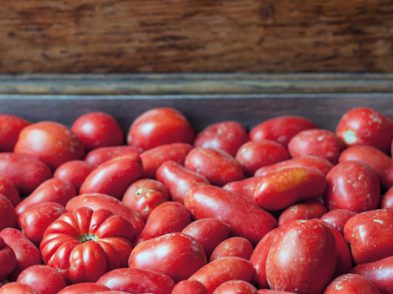Italians will always argue that their cuisine is superior to French cuisine. Indeed, they are quite confident that they were the ones who taught the French how to cook. It was, in fact, a Florentine who is thought to have been at the centre of a defining moment in the development of French cuisine by exporting Florence’s best recipes to France.
It was Caterina de’ Medici, the great-granddaughter of Lorenzo the Magnificent and, at 14, the new bride of Henry II of France. She was not fond of the local dishes she found there and insisted on bringing her own Tuscan chefs to her rescue, much to the shock, delight and amusement of her French guests.
Some of today’s most classically French recipes can be traced back to Caterina’s time, five hundred years ago. She introduced her favourite Tuscan produce, such as olive oil, white beans, artichokes, and figs as well as many desserts and, as legend has it, even table manners-Caterina is said to have been the first one to place a fork on a French table.

Her imported Tuscan chefs created dishes that became a big hit in France-and stayed. For example, the humble French onion soup so loved today, a dish so French that it even has its nationality in its title, may have actually originated in a Tuscan kitchen.
While onion soup of various guises has been around since ancient times, one of the best known recipes for carabaccia, a traditional Tuscan onion soup, was jotted down in the 1500s. The recipe, apparently a favourite of the vegetarian artist Leonardo da Vinci, and recorded by chef Cristoforo da Messiburgo, describes sliced onions cooked in vegetable broth, enriched with a Renaissance sweet and sour twist of ground almonds, vinegar, sugar and cinnamon.
The Tuscan recipe evolved, as tastes did, without the sweetness, and it was simplified to the more recognisable recipe of onions cooked in olive oil and vegetable broth and served over toasted bread. The French version today is very similar, but usually made of richer beef broth instead of vegetable, and is never without a slice of toasted bread covered in melted cheese on top. The Tuscans, instead, put their bread to soak at the bottom of the dish.
Several variations of carabaccia exist, including a very country-style addition of an egg, which poaches in the soup itself, to enrich this simple but tasty soup. Another variation involves adding fresh peas and fava beans, a testament to the time of year this appears, as these vegetables, including the onions themselves, are in season in the spring. The peas and beans freshen the soup and add some pretty colour.
Buon appetito!
CARABACCIA (Tuscan onion soup)
Ingredients (Serves four)
1 kg onions (traditionally, Tuscan red onions from Certaldo are the best to use)
1 lt vegetable broth
400 gr ciabatta bread, sliced in thick slices
A handful of grated Parmesan or pecorino cheese
Olive oil
Salt and pepper
For variations:
100 gr freshly shelled peas and fava beans or 1 egg
For the carabaccia:
Thinly slice the onions and saut? them gently over low heat with some olive oil in a pot (ideally a terracotta pot). Allow the onion to very, very slowly, gently sweat until it becomes golden, slightly transparent but not browned. This is such a simple dish that it is important not to rush this step; how you cook the onions is going to determine how good the soup comes out. Let them cook slowly for about 30 minutes, drawing out the flavour and sweetness for as long as possible. A pinch of salt at the beginning can help. If the onions are getting dry, add some broth, a small amount at a time.
Add the broth and cover the pot, leaving to simmer for about 30 minutes. Check it with a gentle stir every now and then. If you are going to add the fresh peas and fava beans, do this halfway through the simmering.
Meanwhile, slice the bread and toast in a grill. Place one slice in the bottom of each soup bowl. Spoon the soup over the top of the bread and cover with a handful of grated cheese, letting it rest for a minute or two to melt slightly before serving it piping hot.
If you are going to add the egg, do it before covering the soup with cheese. Crack the raw egg right into the boiling hot soup, add the cheese and cover the soup bowl (if the bowl doesn’t have a lid, a bit of aluminium foil will work). Allow it to sit for a few minutes before serving while the whites cook. This will leave the yolk very runny, and as it breaks and mixes with the rest of the soup it will create a very creamy, rich texture. Alternatively, you can also add a separately poached egg.


Read more from Emiko Davies’ cookbook Florentine: The True Cuisine of Florence, published by Hardie Grant Books. Order your copy of Florentine: The True Cuisine of Florence.








